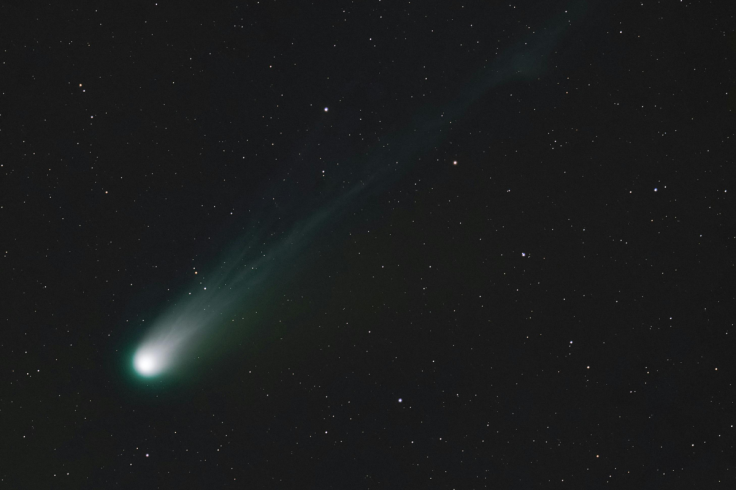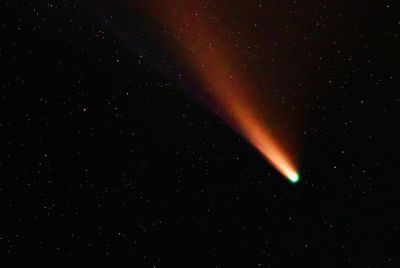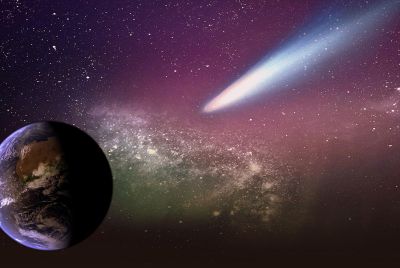3I/ATLAS May Be a Sign, Says Avi Loeb—Are Advanced Civilizations Watching Us?
Harvard scientist Avi Loeb fears a new quasi-moon, 2025 PN7, could be an alien monitoring device.

A newly discovered "quasi-moon" near Earth is causing a major stir among scientists and the public. Named 2025 PN7, this asteroid has been temporarily captured by Earth's gravity. However, one of the world's top scientists has a much more startling theory.
Harvard professor Avi Loeb is investigating the object to see if it is an artificial monitor. He suggests it might be an alien probe sent by an advanced civilisation.
Loeb's hypothesis stems from a simple observation. He points out that humanity's recorded history, spanning barely 8,000 years, is almost insignificant. This is a mere blink of an eye compared to the 13.8 billion-year age of the Milky Way.
He suggests that in this vast expanse of time, other intelligent life likely evolved long before us.
Avi Loeb points out that humanity’s recorded history — barely 8,000 years — is insignificant compared to the vast age of the Milky Way. This means countless interstellar objects like 3I/ATLAS may have passed through our Solar System long before humans could ever record them.
— Astronomy Vibes (@AstronomyVibes) October 28, 2025
He… pic.twitter.com/Gy2RPd9Xs1
Are We a 'Baby Civilisation'?
Consequently, Loeb proposes that these advanced civilisations might view humans as a 'baby civilisation.' Instead of making direct contact, they might simply choose to watch us from a safe distance.
He theorises they could have placed monitoring devices within our cosmic neighbourhood to keep an eye on emerging species. The newly found 2025 PN7 is now a prime candidate for one of these hypothetical probes.
Scientists at the Pan-STARRS observatory in Hawaii first spotted 2025 PN7 on August 29. It is believed to have been orbiting Earth for about 60 years and will remain for another 60. Astronomers note it is the seventh known quasi-satellite found near our planet.
Astrophysicists describe 2025 PN7 as being 'roughly the size of a small office building' and note it is 'far too small to have a measurable effect on the Earth's tides or anything else.'
Most scientists agree it is just a temporary asteroid, but Loeb insists that only data and evidence can reveal its true origin.

A Surge of Interstellar Visitors
Loeb's investigation comes as our Solar System receives another rare visitor. NASA is currently tracking Comet 3I/ATLAS, the third known object to arrive from interstellar space. This comet, which poses no threat, was discovered on July 1, 2025, by the ATLAS survey in Chile.
At its closest, the comet will remain far from our planet, passing at a distance of about 170 million miles. It is expected to reach its closest point to the Sun around October 30, 2025, putting it just inside the orbit of Mars.
Comet 3I/ATLAS follows the discoveries of 'Oumuamua in 2017 and 2I/Borisov in 2019. Based on NASA's Hubble Space Telescope observations, astronomers estimate the comet's nucleus is between 1,444 feet and 3.5 miles in diameter.
These frequent arrivals seem to support Loeb's core argument. He believes countless interstellar objects like 3I/ATLAS have passed through our system, long before humans could ever record them. This suggests the galaxy is a very busy place.
While NASA missions like the Hubble and Webb telescopes study the distant Comet 3I/ATLAS, an entire fleet of assets is being pointed at the visitor. These include the Perseverance and Curiosity rovers on Mars, the Lucy and Psyche missions, and the Parker Solar Probe, among many others.

Loeb is focusing on the object much closer to home. He is determined to find out if 2025 PN7 is a natural rock or the first proof that we are being watched.
© Copyright IBTimes 2025. All rights reserved.





















